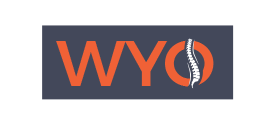Just like every part of your body, your bones need maintenance to be healthy and strong. Exercise is one of the pillars of bone care and fall prevention. By taking steps now, you can help maintain the bone mass you have and may even build a little more, reducing your risk of debilitating fractures later in life.
Certain types of exercise can increase muscle mass, which in turn enhances strength, muscle control, balance, and coordination. Good balance and coordination can mean the difference between falling—and suffering a fracture—and staying on your feet. In fact, strong evidence shows that regular physical activity can reduce falls by nearly a third in older adults at high risk of falling.
All exercises for bone strength have one or more of the following attributes:
Provide resistance. In these forms of exercise, you challenge your muscles by working against some type of resistance, such as dumbbells, elastic bands, or even your own body weight. Resistance exercises, including classic strength training, rely on muscle contractions that tug on bones to stimulate them to bulk up.
Weight-bearing. Weight-bearing exercise is any activity, such as running, walking, dancing, hiking, climbing stairs, or playing tennis, golf, or basketball, in which you carry your body weight and work against gravity. This contrasts with non-weight-bearing activities such as swimming or cycling, where the water or bicycle supports your body weight. The force you exert to counteract gravity when you do weight-bearing activities is what stimulates bones to get stronger.
Provide impact. When you land a jump or pound the ground with each step as you run, you multiply the weight-bearing effect of gravity. That's why higher-impact activities generally have a more pronounced effect on bone than lower-impact exercises.
Higher velocity. The impact can be increased even more as your speed increases. For example, jogging or fast-paced aerobics will do more to strengthen your bones than a leisurely stroll or slow calisthenics exercises.
Involve sudden changes of direction. Changing direction while you're moving also appears to benefit bones. When researchers reviewed bone strength in the hips of a variety of athletes, they found that those who played sports such as soccer and squash, which involve rapid turns and start-and-stop actions, had bone strength similar to those who did high-impact sports, like triple jumpers and high jumpers—and they all had greater bone density than long-distance runners.
Improve balance. Exercises that target balance may not be the best for building bone, but they will help keep you from falling, so they also serve a bone-protecting function.
If you are having pain, discomfort, or unusual symptoms when working out or completing daily activities, contact the experts at Wyoming Orthopedics and Spine today at 307-686-1413.
Source: https://www.health.harvard.edu/staying-healthy/the-best-exercises-for-your-bones



 Pay Your Bill
Pay Your Bill Request an Appointment
Request an Appointment

 Driving Directions
Driving Directions